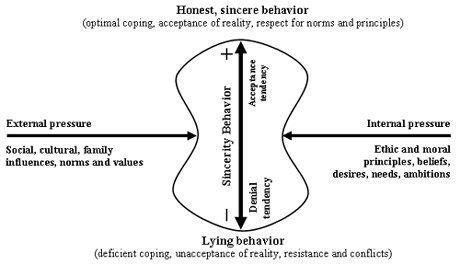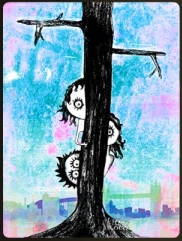|
Graphical tools and short synopsis
as a practical method for
quick psychological
examinations and
interventions.
 This website is created by occasion of the planned visit of the lecturer in the realm of LLP/Erasmus Program ( May 2010). |
![]()
| Host institution
.: Masaric University - Faculty of Medicine
- Department of Nursing Coordinators of Lifelong Learning Program - Erasmus Miss Andrea Pokorna, Ph.D. Invited lecturer .: prof. Andrzej Brodziak, M.D., Ph.D., Sc.D. https://www.angelfire.com/ga3/gean/homepage.htm Institute of Nursing of The State Higher Vocational School in Nysa, Poland http://www.pwsz.nysa.pl/index.php?l=2 and also Head of Hospital Ward and Teaching Department of Internal Diseases of the Faculty of Public Health of Silesian Medical University, Katowice, Poland http://www.slam.katowice.pl/page.php?233 http://salve.slam.katowice.pl/index.html |
|
The website , apart of the main subject presents some additional information useful for eventual discussion. This, enclosed additional texts concern the problem of elaboration of tools helpful for estimation of the state of mind (state of psyche, general psychological condition, level of consciousness). |
|
This website will be developed. Till now, the content of this www page is as follow.:
1. The conten of planned lecture sub title " Graphical scheme of "personalized world" and other tools for quick psychological examinations and interventions in emotional states of people with troubles. 2. The copy of the paper sub title .: "Development of a questionnaire for estimation of general mental condition and commitment in social problems, evaluated among nursing students in international comparative studies" 4. The content of the called "Map of consciousness" in English language
" Graphical scheme of "personalized world" and other tools for quick psychological examinations and interventions in emotional states of people with troubles.
Concrete, practical, effective action of
physicians, nurses and paramedics are
based on
acquired
theoretical
knowledge and practical
experiences.
The
theoretical
knowledge
refer often to
memorized pictures
of
body organs,
visualizations
of
anatomical
details
and many
functional
schemes.
As an example we can enumerate
structures
of the heart, digestive tract, biliary ducts,
portal vein and so. Medical
professionals
refer also to more functional outlines like
schemes of
function of immunological
or endocrine systems.
It seems to us that
medical professionals need
also similar
outlines, which visualize
the function of human psyche.
This
schemes would be useful in
situations of
the trials of
determination
( examination ) of psychological
state
when help or at least
advices are necessary.
The quick recognition of the state
of mind is useful
in the case of
accidents and different rescue
situations.
So,
I
aim to
propose in this lecture
the
schemes
of psyche and
some
additionally
outlines useful in situation
of the need of psychological help.  Fig. 1 The scheme take into account main Carl Gustav Jung's notions and basic concepts of Carl Rogers and Eric Berne's theories. The outline emphasizes main components of unconscious area of the memory. When the ability of a person to intimate contact with the partner is impaired, according to Eric Berne's theory, he is impelled to social contacts realized through so called games ( manipulations). Scenarios of these games are established by the particular content of his Jungian "Shadow". The war is one of possible games of so called Berne's "third degree" of intensity.
Graphical model of
psyche
based on
Carl Jung's concepts
Fig. 2

The
graphical
pictures
are
effective
for the
visualization
of
the
structure
of
a
construction
but less
effective
for the
presentation
of
the
function
of a
system,
so we
should
supplement
our
scheme
by the
list
of
motives
of
human
actions.
It can
be
settled
by
answer
to
the
question:
"What
people
are
doing
thouout
their
lives? "
Fig. 3.
It seems that
they
seek
to ease the
tension or
seek
for fulfillment
(gratification),
when they perceive a
need or expectations
on different,
more and more
complicating levels:
1.
Appease
hunger
and
thirst
2. Avoid
danger
3.
Satisfy
curiosity
(to
explore,
break
secrets
or
mystery)
4.
Satisfy
the need
for
intimacy,
sex and
love
5.
Defend
freedom
and
autonomy
6.
Receive
respect
and
acceptation
by
"important
others"
7.
Professional
success
(satisfaction
from
accomplishment
of
assumed
self -
image )
8.
(Unfortunately
) also
satisfaction
from
negative
human
interactions
(nastiness,
revenge)
as well
from
Eric
Berne's
"games
people
play" -
manipulations
9. Joy
from
well-being
of
nearest
important
persons
(partner,
family)
10. Satisfactions from
performance and
results of own
creativity, intellectual
of
scientific
achievements
as well
from
own
imaginations
(fantasies)
11. Joy
from
perception
of
nature
and art
12.
Satisfaction
from
social
interactions
-
participations
in the
activity
of
a
particular
group
13.
Satisfaction
from
admiration
of
conformity
of
observations
with own
model of
the
world
(worldview).
|





















|
One of
ways to
describe such
irrational
thinking was proposed by the authors of
the behavioral and cognitive school
of
psychotherapy.
Already in 1974
Albert Ellis noted that many people
professes believes very unfavorable for
them. These believes deteriorate their
thinking,
disturb in their lives and even are
causing pain. He had
suggested a
list of the most common,
irrational
exaggerated, too demanding attitudes and
believes. We enumerate here
some
examples of such attitudes:
I-1
I wish that
anybody love me and
show me his
appreciation.
I-2
My
worth
depends on
my achievements and skills.
I-5
Any problem
can be solved
by one
appropriate solution and
when this mean
cannot be applied the results will be
deplorable.
I-7
Some people
are bad and evil and should be severely
punished.
I-8
If things
do not
run
according
my expectation it is
unbearable.
I-10
I am upset
when people are dissatisfied.

Examples of
behavior
which
are
described
as
irrational:
unrealistic
expectations
groundless
offenses
or anger
expressing emotions in an exaggerated way such as hysterical crying crowd behavior belief in the supernatural without evidence
engaging
in
irresponsible
acts
such as
getting
intoxicated,
being
disorganized
or
extravagant
irrationality
in the
form of
a mental
illness,
such as
obsessive-compulsive
disorder,
major depressive disorder, and paranoia.
Theories of irrational behavior include:
1. People's actual interests differ from what they believe to be their interests.
2. Mechanisms that have evolved to give optimal behavior in normal conditions lead to irrational
behavior in abnormal conditions.
3. In situations outside of one's ordinary circumstances, one may experience intense levels of fear,
or may regress to a fight or flight mentality.
4. People fail to realize the irrationality of their actions and believe they are acting perfectly
rational, possibly due to flaws in their reasoning.
5. Apparently irrational decisions are actually optimal, but made unconsciously on the basis of
"hidden" interests that are not known to the conscious mind
6. An inability to comprehend the social consequences of one's own actions, possibly due
in part to a lack of empathy.
7. Some people find themselves in this condition by living "double" lives. They try to put on
one "mask" for one group of people and another for a different group of people.
Many will become confused as to which they really are or which they wish to become.
Factors which affect rational behavior include:
1. Stress, which in turn may be emotional or physical
2. The introduction of a new or unique situation
3. Intoxication
Causes of depression according to cognitive theory
of
Aaron Beck
His theory states that depressed people
think the way they do because their thinking is biased
towards negative interpretations. According to Beck’s
theory
depressed people acquire a
negative schema of the world in childhood and
adolescence.
Depressed people acquire such schemas through a loss of
a parent, rejection of peers, criticism from teachers or
parents, the depressive attitude of a parent and other
negative events. When the person with such schemas
encounters a
situation that resembles
in some way, even remotely, the conditions in which the
original schema was learned, the negative schemas of the
person are activated.
Another approach is the concept
of
Aaron Antonovsky's
Sense of
Coherence(SOC).
He
identifies three
inherent prerequisites that determine a
person’s abilities to cope as:
Meaningfulness: The profound emotive experience of life as making sense and thus coping being desirable. Manageability: The recognition of the resources required to meet the demands and a willingness to search them out.
Comprehensibility:
The conceptual perception of the world
being understandable, meaningful,
orderly and consistent rather than
chaotic, random and unpredictable.
Principles of psychotherapeutical advises
(exploration) of the world, which could decrease the unhealthy, neurotic exaggerations and increasing the feeling of meaning (sense).
4.
Advice
related
to the
need
of the
elaboration
of own
plan of
future
actions.
ad. 2.
Andrzej Brodziak
1 Department of Internal Diseases of the Faculty of Public Health of Silesian Medical University ( Institute of Nursing of
the State Higher
Vocational
School
in Nysa ) Poland.
Introduction
From the average level of optimism, positive emotions, vigor, so
called mental energy or general mental well-being depends the ability to
perform the difficult professional
tasks, take challenges
and overcome the difficulties.
Certain professions and social roles put considerable demands.
Nursing is among this kind of profession. One expects from nurses the
commitment to the problems of other people.
The good general mental well - being of nurses is very
desirable.
Monitoring of opinion
of publicists and personally impressions from discussion with
young people in several European countries (Poland, Czech Republic,
Hungary, Belgium) incline us to consider also
whether the general mental condition of the European nations
is really good
We decided therefore to review the existing tools suitable for
comparative studies of the mental state of the groups of people
from different countries. This review has shown that there is
a lack of adequate tool. This prompted us to develop a new
questionnaire, which allows estimating the most important determinants
of overall mental fitness.
We
used
the developed questionnaire in the course of the comparative study of
Belgian and Polish students of nursing.
Backgrounds
of the new questionnaire
Aaron Antonovsky many years ago tried to bind so-called
mental coherence with the state of health. This concept, as is
known, includes the person's ability to understand the surrounding
reality, to see the meaning of the world and his resourcefulness. The
concept of coherence as a factor essential to the well-being and health
is constantly evolving (1,2).
It is postulated recently that the factor, which is essential for the
maintenance of physical health is so-called emotional coherence (2).
Relationships are found also between health and so-called emotional
intelligence (3). S. Ventegodt confronts
these factors
with similar concepts of quality of life philosophy, life
mission life and the meaning of life.
Recently there are also frequent attempts to estimate psychological
condition of a person or
Structure
of the
proposed
questionnaire The elaborated questionnaire is given in Table 1. The translations into French, and Polish - the languages of the survey can be obtained from the author. A person responding to our questionnaire should determine whether he agree (confirms) or rather deny the particular statements. For the answers "Yes", "No" or "between" the values 1, -1 or 0 are assigned. The algebraic sum is computed. So, the result obtained by a person, who filled the questionnaire can be expressed on a scale < -20, 0, + 20 >.
Table 1.
The questionnaire allowing
to estimate the overall "mental condition of a person" and to
give him advices on
specific components of the feelings
and highlighted troubles.
Total
......................
Our firs trials
of the developed
questionnaire.
We realized the
comparative study among
two groups of students of the first year of
nursing study. Statistically significant differences (using
the Chi- square test) were found for the proportion of answers "Yes" and
"No or between" among Belgian and Polish students in items nr
1,4,12,15,18.
Conclusions
It seems, that
the elaborated questionnaire is suitable for
the evaluation of general mental condition and ability to be
involved in searching for solution of
social problems as well as learning and creativity. It
can be helpful also for
direction of
supportive
counseling.
References
1. Endler PC, Haug TM, Spranger H. Sense of coherence and physical
health.
A "Copenhagen
interpretation" of Antonovsky's SOC concept.
Scientific World
Journal. 2008; 8:451-3.
2. Flensborg-Madsen T, Ventegodt S, Merrick J. Sense of coherence and
physical health.
The emotional sense
of coherence (SOC-E) was found to be the best-known predictor
of physical health.
Scientific World
Journal. 2006; 6:2147-57.
3. Codier E, Kooker BM, Shoultz J. Measuring the emotional intelligence
of clinical staff
nurses: an
approach for improving the clinical care environment.
Nurs Adm Q.
2008; 32(1):8-14. 4.
David R. Hawkins .
Power vs. Force: The Hidden Determinants of Human
Behavior
- The hidden determinants of human behavior. Hay House Inc.,
Carlsbad
( California),2002 5.
Brodziak A. Theories attributing meaning to human life and promoting
health.
The Internet
Journal of World Health and Societal Politics(ISSN: 1540-269X).2008.
Volume 5
Number 2.
http://www.ispub.com/ostia/index.php?xmlFilePath=journals/ijwh/vol5n2/theory.xml
The questionnaire allowing to estimate the overall "mental condition of a person" and to give him advices on specific
components of the feelings
and highlighted troubles - see table above
ad. 4. The content of the called
"Map
of
consciousness" in English
language

There are many different questionnaires and measurement tools helpful for the assessment of the mental state.
We
try to emphasize this fact by
quotation
of one picture only.:
https://www.angelfire.com/planet/tedeus/theory.htm
|